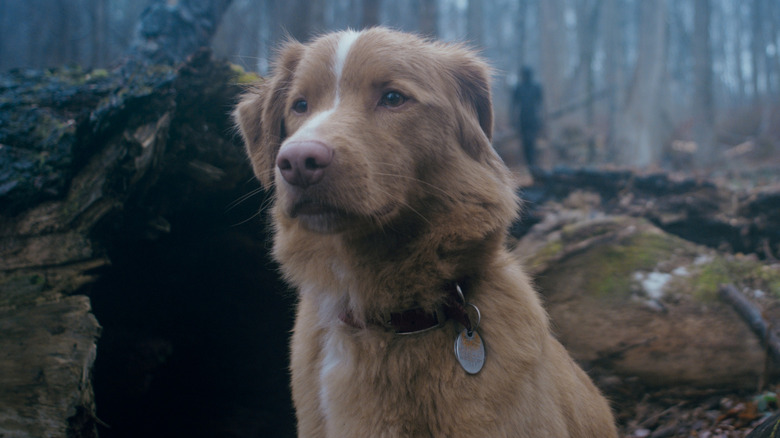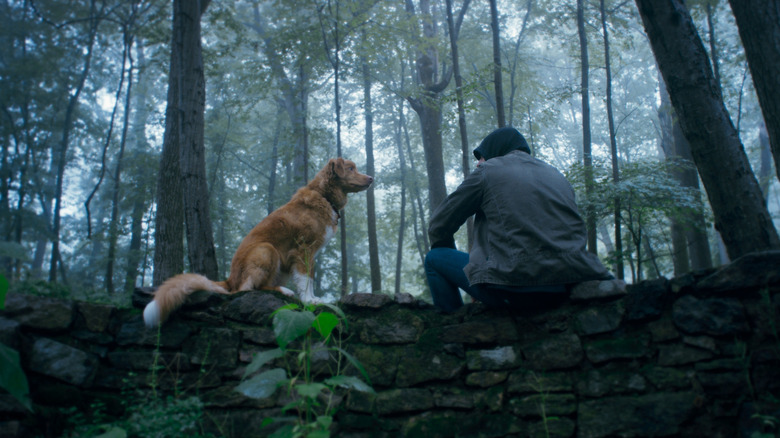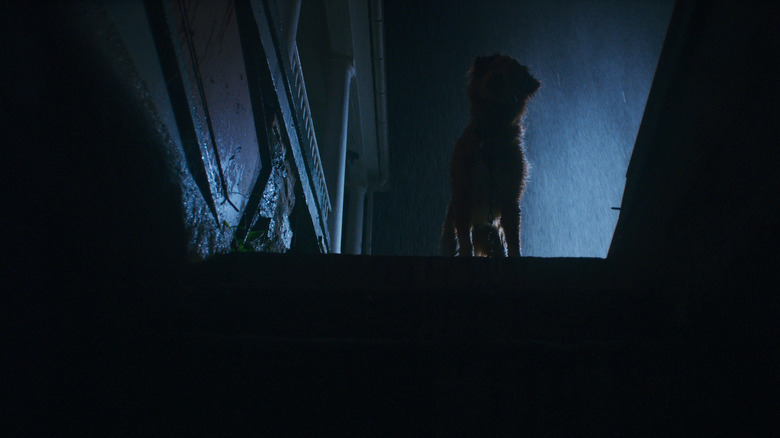Share this @internewscast.com
RATING : 8 / 10
- Well-crafted supernatural horror set pieces
- The dog POV is wonderfully utilized, never feels like a gimmick
- A genuinely moving tale about the love between a dog and its owner
- It’s a scrappy debut where the imperfections are part of the charm — no cons, even though it’s not flawless!
The supernatural horror genre often explores the concept of pets sensing unwelcome presences before their human owners. Yet, despite this intriguing angle, few stories have fully embraced this perspective. The 1996 film “Bad Moon” attempted to tell a werewolf story through the eyes of a pet dog but failed to move beyond mere gimmickry. Dogs, known for their loyalty, offer a perfect emotional anchor for a ghost story, yet films often overlook this potential, reducing it to minor scenes rather than a central plot element.
In contrast, Ben Leonberg’s “Good Boy” showcases the potential of pet’s-eye view horror. Shot over several years, it tells the story of a dog’s unwavering devotion to its owner amidst a supernatural threat. Leonberg’s use of his own dog, Indy, elevates this viewpoint beyond a simple novelty, crafting a fresh narrative by tapping into the deep bond between pet and owner. This approach allows traditional ghost story elements to feel new and excitingly different from the usual genre fare.
More than a gimmick
Leonberg effectively conveys the relationship between Indy and his owner, Todd, by cleverly casting himself as Todd for certain scenes, with actor Shane Jensen’s voice dubbed in later. This subtle choice highlights the owner-pet bond, even as Todd becomes increasingly distant. Todd’s move to a home haunted by past family tragedies, combined with a cancer diagnosis, creates a scenario Indy doesn’t fully comprehend. Leonberg underscores this through a recurring comedic device where Indy is distracted during human conversations about the haunted house, emphasizing that understanding the haunting isn’t as critical as Indy navigating it to protect his owner.
The film’s most striking moments occur before the supernatural elements are revealed. Leonberg portrays Todd’s behavioral changes, prompted by his personal challenges, as chilling through Indy’s perspective. For instance, Todd’s absences morph into ominous events through Indy’s anxious view, marking these mundane moments with a tension reminiscent of Spielberg classics like “Poltergeist.” The film relocates similar horror themes from suburbia to a traditional eerie cabin, ensuring Indy’s limited understanding amplifies the unease effectively.
An affecting story about mortality (but not for the reason you think)
With a concise runtime of 71 minutes, “Good Boy” lacks detailed supernatural lore, but the pet-focused narrative renders this unnecessary. Dogs, unfamiliar with ghosts, experience threats acutely without needing explicit visual confirmation. This choice cleverly integrates with the pet-POV approach, utilizing unseen horrors enhanced by Jensen’s voice to add dramatic tension. By presenting familiar tropes through Indy’s fresh perspective, the film reinvigorates them with a surreal touch.
Discussion around “Good Boy” often focuses on the ethics of animal character deaths in films. Audience preferences for safeguarding canine characters reflect their affection for dogs as heroic figures, often overshadowing human character fates. Leonberg’s film, however, draws emotional depth from flipping the typical pet-owner dynamic. While pets often introduce children to the cycle of life and death, reversing this relationship poses challenges. “Good Boy” approaches this theme authentically without anthropomorphizing Indy, offering a heartfelt exploration of mortality from an animal’s genuine perspective.
And yes, it’s undeniable that Indy didn’t grasp the grave nature of the material he was given and perhaps wasn’t even aware that he was being recorded. But over the course of several years, Leonberg captured enough footage of his beloved pet to build an emotional arc that feels authentic, purely through Indy’s gestures alone. It may have been a long filming process for the sake of finding the right takes that could manipulate an audience’s feelings, the director effectively projecting his own anxieties about mortality onto his dog, but it never comes across as cheap or exploitative. It feels genuine, even if the central performer had no idea he was being filmed, or that his movements would communicate a much larger existential sentiment.
Pet owners will likely be moved to tears by “Good Boy,” but not for the reasons they’re afraid of. Transcending its gimmick status within its opening stretch and only growing more resonant from there, it becomes that rare horror film you could recommend to people who hate the genre — the set pieces are well constructed, but their impact pales next to a haunting, moving story about a dog and his owner.
“Good Boy” premieres in theaters on October 3.










